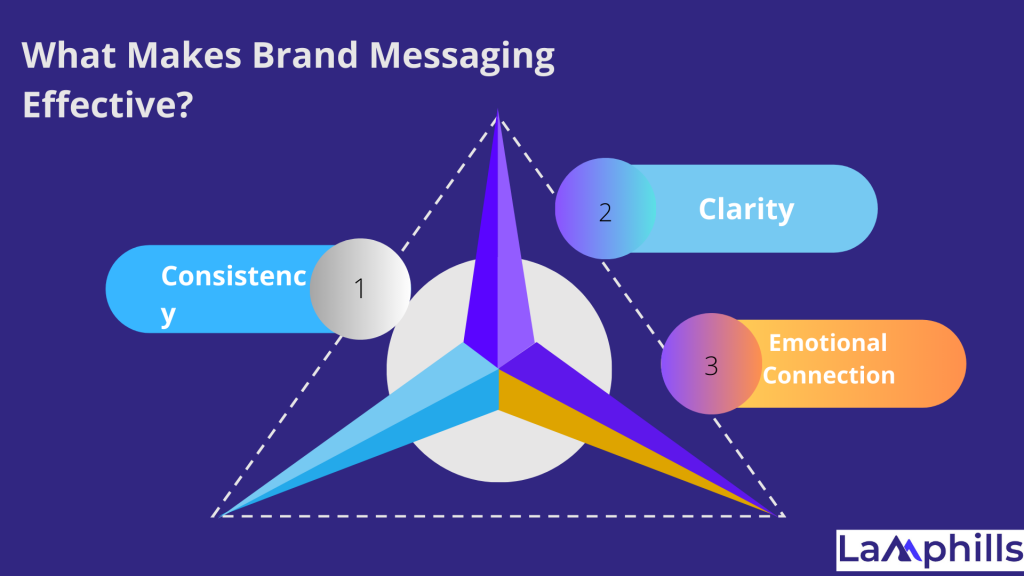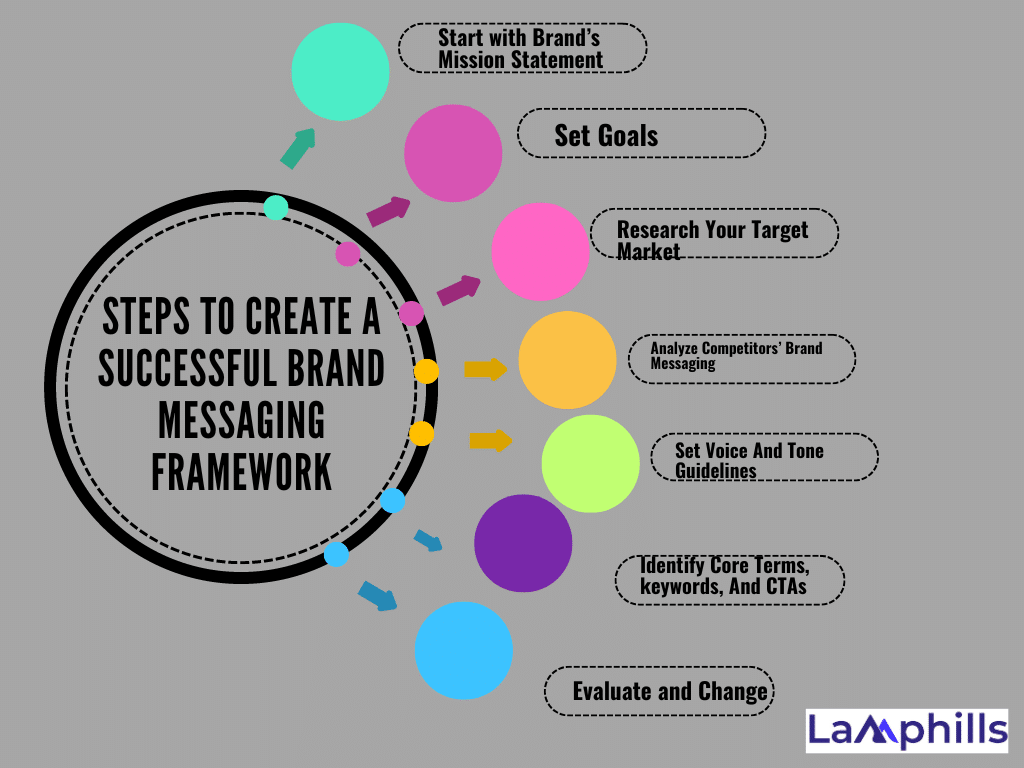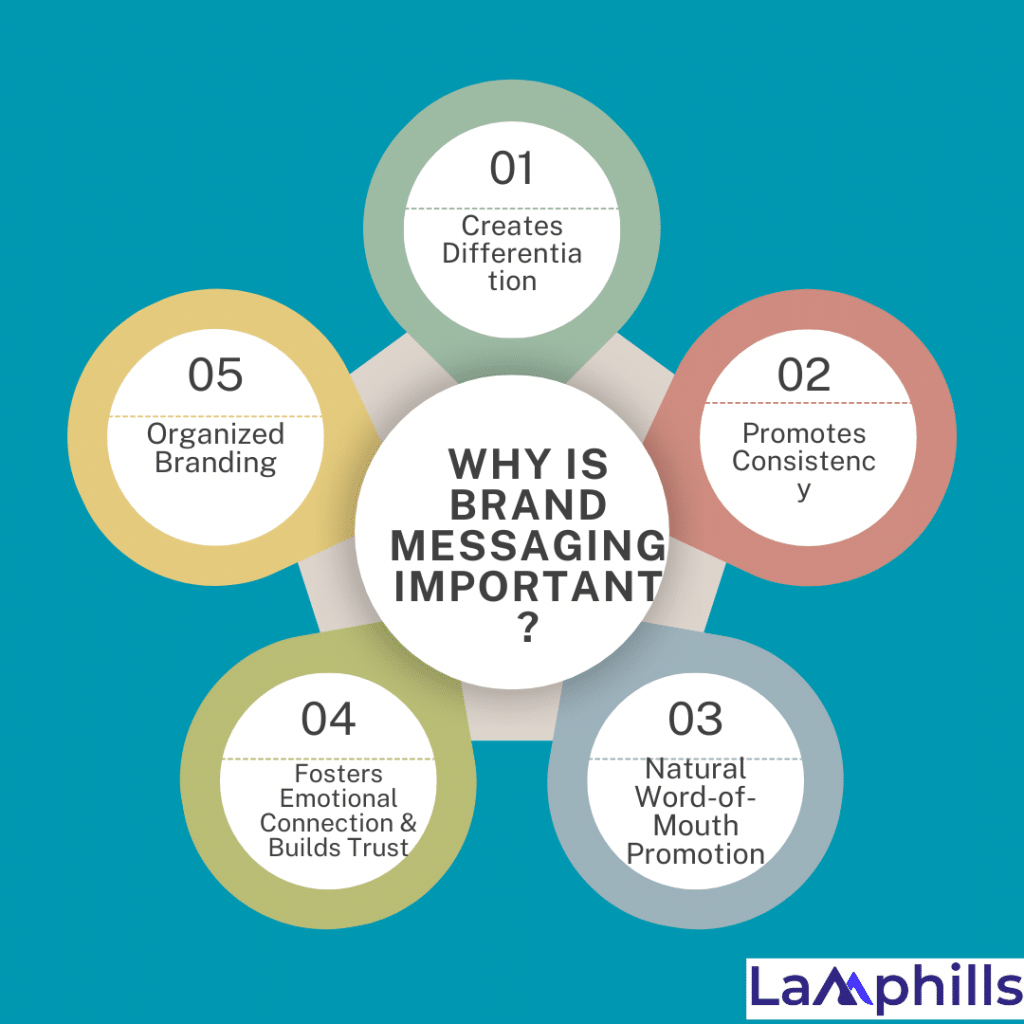If there’s one thing I’ve learned from my experience as an SEO content writer, it’s that brand messaging is more than simply creative taglines and catchy words. It is about speaking your audience’s language, connecting with their emotions, and communicating your brand’s distinct identity. Over time I’ve seen businesses improve their brand reputation overnight by simply narrowing in on their messaging, while others fail to connect because they haven’t mastered it.
In this article, I’ll show you effective brand messaging examples that have inspired me over the years and can do the same for your business approach. including how to create a brand messaging framework that makes it easy to craft the perfect communications for your business.
Key Takeaways
- Effective brand messaging isn’t just about catchy slogans or clever taglines—it’s about forging a deep emotional connection with your audience.
- A consistent message across all platforms fosters trust and brand recognition. Whether it’s McDonald’s famous “I’m Loving It” or Apple’s “Think Different,” consistency in messaging reinforces who you are and what you stand for, ensuring customers know what to expect from your brand.
- People don’t just buy products—they buy feelings. Emotional resonance in brand messaging can make a lasting impact on customers, inspiring loyalty and word-of-mouth promotion. This can be seen in brands like MasterCard, whose messaging emphasizes trust and reliability.
- When brand messaging resonates, customers become your advocates, naturally promoting your business through word-of-mouth. Companies with strong messaging, like Loom, inspire customers to talk about their products and services because they connect on a deeper level.
What Is Brand Messaging?

Brand messaging is a one-on-one interaction between a company representative and a user that takes place across all distribution channels and important touchpoints, including Facebook, Instagram, website chat, Messenger, traditional SMS, packaging, and even business cards.
If you look deeper into this concept, you’ll notice that brand messaging isn’t just a conversation. Every professional brand design agency will tell you that it is a set of procedures and rules that the company uses to offer its value proposition to potential customers, express the company’s culture and fundamental values, and elicit the appropriate range of emotions to form a link.
What Makes Brand Messaging Effective?

Before diving into the examples, let’s talk about what makes brand messaging truly powerful. I’ve found that the most effective messaging has three critical components:
#1. Consistency
I have worked with a startup that had inconsistent communications. They intended to appeal to tech-savvy millennials one day, and then to families the next. Their message differed based on the social media they were using. Guess what? Customers were confused. Consistency guarantees that your audience understands who you are and what you stand for, regardless of where they encounter your brand.
#2. Clarity
There is beauty in simplicity. I’ve seen brands overcomplicate their branding by packing too much information into a phrase or tagline. What was the result? It diluted the message. Clarity entails expressing your message in a way that is simple to understand, regardless of who is reading it.
#3. Emotional Connection
When I was first starting, I read a book that shifted my perspective on brand messaging. It said, “People don’t buy products, they buy feelings.” This couldn’t be more true. Whether it’s a sense of security, excitement, or happiness, your messaging should spark an emotional connection with your audience.
Steps to Create a Successful Brand Messaging Framework

Your brand messaging requires planning and effort on the back end to appear immaculate when delivered to others. However, creating compelling brand messaging frameworks is not an easy undertaking. All you need to do is outline some of the company’s characteristics and attributes. This method can be divided into several basic parts.
#1: Start with the Brand’s Mission Statement
The challenging thing about developing a brand message structure is that you may find yourself in a “What came first?” scenario. The “chicken or the egg?” scenario. Your brand messaging should align with your company’s goal statement. However, to produce the strongest potential mission statement, you must first establish a solid brand messaging foundation.
Nonetheless, your mission statement can help organize your brand message framework around your company’s main goals. So, utilizing this advice on how to develop a mission statement, try focusing on your company’s mission statement as the first step toward a strong brand messaging framework. Then, once your framework is established and you begin applying your brand messaging, you can always go back and change your mission statement as needed.
#2. Set Goals
Your objectives will demonstrate what you hope to achieve with your brand messaging in the end. Take inventory of your company’s short- and long-term marketing goals to determine what your brand messaging framework should be aiming toward.
For example, if one of your objectives is to generate more leads, you will certainly want to increase website traffic so potential buyers may fill out a contact form or phone your organization. Remembering this, you may craft a marketing message that entices clients with an “all online” method.
#3. Research Your Target Market
Brand messaging isn’t only about what you say, but also how you say it, and, more importantly, to whom you say it. Knowing your target audience is key to crafting the perfect brand messaging that resonates with them, relates to them, and ultimately convinces them to do business with you. This might feel silly at first but take a moment to picture your ideal customer. Think about:
- What they might look like
- Their lifestyle
- Their job
- Their income
- The family and friends they might have
- The devices or platforms they might use and when they’d be on them
- Where they live
- What they do for fun
- The types of content or brands they enjoy
Considering target market traits like these can help you pinpoint how to correctly craft and deliver your brand messaging. For example, if your home services business is targeting middle-aged homeowners, you might focus on a family-friendly brand message since your potential customers likely prioritize family time. Next, you could decide to include OTT advertising (like Hulu Ads) as a key marketing channel in your brand messaging framework, since your audience is likely streaming home renovation shows.
#4. Analyze Competitors’ Brand Messaging
I’m not proposing that you use this brand messaging framework stage to copy or tease your competitors’ messaging in your content. Two-thirds of consumers find it irritating when brands mock their competition. So you don’t want to conduct a competitive study only to develop a defensive brand message approach.
Instead, analyze your competitors’ brand messaging to get a sense of what you might or might not want in your material. Observing how your competitors portray themselves might help you understand what the standards are in your sector and how you can differentiate yourself.
#5. Set Voice And Tone Guidelines
As I said earlier, your brand messaging framework is essentially a set of principles to assist the design of your marketing communications. There will be some rule-setting involved. You’ll want to establish a set of criteria to help your staff adhere to your brand rules.
This includes any notes or examples of your preferred tone and voice based on what works best for your audience. You may also wish to refer to your brand kit for any grammatical, font, or creative choices that could affect how your brand messaging is received.
#6. Identify Core Terms, keywords, And CTAs
To keep your brand messaging consistent throughout your marketing journey, try sticking to a brief list of buzzwords, keywords, or calls to action that your team can refer back to. This helps to ensure that your brand messaging remains constant over time since you will always employ the same fundamental terms that emphasize your company’s mission. Furthermore, your brand messaging should be consistent with your SEO strategy, so that it can help you rank for top keywords across all of your online assets.
#7: Evaluate and Change
Nothing lasts forever in the realm of digital marketing—your customers will evolve, and your messaging should adapt to them. Rebranding is a normal component of any ongoing marketing strategy, all it means is that your initial brand messaging evolved. Rather, rebranding is acknowledging a change in the environment.
For example, you might change your brand messaging if your ideal customer changes. Sometimes you build a product with a target audience in mind, but after growing and developing, you realize there is another customer base you can serve even better. Maybe you’re targeting executives now instead of individual contributors. When this happens, your brand messaging will need to change as well.
The Best Examples of Brand Messaging
Some brands have been showing how it is done in a high-quality way. They are great sources of inspiration for your company to implement qualified brand messaging. You may want to think about the value proposition and the delivery of precise communication. Get to know which paths these companies have followed.
#1. Taco Bell
Taco Bell has begun to establish a reputation for its bold and humorous brand. If you tweet them, they will probably answer with a funny comment. The idea is to be so relatable that customers like interacting and discussing Taco Bell. People are more likely to become loyal consumers when they hear about and interact with you. The tweet below depicts Taco Bell’s brand identity and messaging. They answer tweets in the same way that a snarky, humorous best friend might.
#2. McDonald’s
I bet you’ve already stated, “I love it.” It is so deeply ingrained in our minds that this reaction occurs unconsciously and without stress – this is the power contained in a phrase based on a carefully developed brand message.
To communicate its fundamental value and proposal to the audience, the company employs a warm, cheery, and casual tone of voice, as well as a radiant range of emotions exhibited in design, text, and service. It is consistent across the globe and through generations. As a result, the brand has a particular place in our hearts and minds, and this relationship generates billions of dollars in revenue each year.
#3. MasterCard
“There are some things money cannot buy. “For everything else, you have MasterCard” is another phrase you’ve certainly heard once or twice. This classic phrase, with a casual brand voice, was created two decades ago, setting the pioneering payment technology campaign on track for success.
It is clear, profound, formal, and inventive. It has a positive emotive approach and conveys a sense of dependability and trustworthiness. As a result, communication becomes more memorable and genuine. The slogan has become the company’s “calling card” that drives us to work with it year after year, thanks to well-developed brand messaging architecture.
#4. Apple
If one brand has become synonymous with innovation, it is Apple. Their “Think Different” campaign is a masterclass in conveying a brand’s vision.
I remember the first time I saw Apple’s “Think Different” advertisement. It included giants such as Albert Einstein and Martin Luther King Jr. This wasn’t just about selling computers; it was about establishing Apple as the brand for those who dared to question the existing quo. This message spoke to me deeply. Like a content writer, I continuously challenge myself to think beyond the box, much like Apple encourages its consumers to do. Consider how your brand can urge clients to “think differently” about your product or service.
Simple. The team has created strong external brand messaging and, most importantly, developed a robust architecture and strategy. Its brand messaging does not scream or cheer; it is just here. It is present across all distribution channels and touchpoints. Even if we cannot see these words on the packaging, we can certainly see and “feel” them in design, advertisements, marketing materials, and all communications.
#5. Loom
Good messaging frequently boils down to communicating value to your target audience and explaining why you’re doing what you’re doing. Loom is an excellent example of this, and it helps that they make an incredible product.
Their homepage reads “Say it with video,” and their motto is “The expressiveness of video with the convenience of messaging.” Loom allows you to communicate more effectively wherever you work. The rest of their website supports the allegation with evidence to prove their case. Here are some examples: “You talk up to 6 times faster than you type” or “Video conveys emotion and tone of voice that text simply can’t.” Even better, their brand messaging is further emphasized by testimonials from brand advocates who believe in this value.
Why Is Brand Messaging Important?

Your messaging communicates your brand story. This develops trust between your brand and your customers. But there are several intrinsic benefits to developing your core brand messaging, including:
#1. Creates Differentiation
In a competitive market, differentiation is always necessary. How would your target customer locate you in a sea of identical brands? Thus, a brand message is what can set you apart since it communicates what you do or offer, why you do it, and why customers should choose your brand.
#2. Promotes Consistency
A brand message serves as the foundation for the rest of your brand. Consider a building made of inconsistent concrete blocks; it will undoubtedly be weaker than other structures and will most likely endure less time. So, when a brand remains constant throughout based on its brand messaging, it is more likely to appear credible and trustworthy, resulting in a longer-lasting relationship with its customers.
#3. Fosters Emotional Connection & Builds Trust
As previously said, having a brand statement ensures consistency, which makes a brand more credible and trustworthy. Furthermore, a brand message serves as a first impression, which can establish or break brand-consumer interactions. When a brand’s message resonates with its target audience, it is more likely to gain trust. As a result, a strong brand message creates a positive first impression, which encourages trust and long-term brand-consumer connections.
#4. Natural Word-of-Mouth Promotion
Even in today’s digital age, word-of-mouth marketing remains the most effective approach to gaining brand endorsements. No matter how much you emphasize the importance of your brand, customers ultimately buy what their peers recommend. Brand messaging resonates with customers more deeply, and shows them how to talk about your brand to others.
#5. Organized Branding
When you write a creative brief, create your elevator pitch, or want to revamp your homepage, having an established brand messaging strategy informs the creator and helps them stay on brand.
What Is a Brand Messaging Framework?
A brand messaging framework is, well, a set of principles and rules that describe a brand message and its core. It can be considered a guide used by various company departments to create products aligned with the company’s values, philosophy, and goals.
What are the 3 C’s of brand messaging?
The 3 C’s of brand messaging refer to three key principles that guide effective communication of a brand’s message:
- Clarity: Messages should be clear, easily understood, and aligned with the brand’s values and objectives. They should convey a distinct purpose or benefit to the audience.
- Consistency: Brand messaging should be consistent across all channels and touchpoints to reinforce brand identity and build trust with consumers. Consistency helps to create a cohesive brand experience and avoids confusion or mixed signals.
- Constancy: This refers to the persistence and continuity of brand messaging over time. Consistent messaging must be maintained over the long term to establish brand recognition and maintain consumer loyalty.
What are the key messages of a brand?
The key messages of a brand are the core points or ideas that the brand wants to convey to its audience, encompassing its values, unique selling points, and brand promise. These messages serve to differentiate the brand, resonate with consumers, and communicate its essence effectively.
What is brand messaging vs. copywriting?
Brand messaging is the overarching communication strategy that outlines how a brand conveys its core values, personality, and unique selling points to its target audience. Copywriting, on the other hand, specializes in the creation of written content such as advertisements, slogans, and website text that are part of a larger brand message plan. Simply put, brand messaging is the overall plan, whereas copywriting is the actual writing that conveys that strategy to the audience.
Conclusion
The importance of having a well-thought-out and compelling brand statement is sometimes ignored by brands. The thing is that, with so much on their plates as a result of an oversaturated market, businesses see it as a snappy tagline that will help with design, content marketing, and advertising campaigns. However, this is a major error. This is because the brand message is a key component of brand identification. It is critical to a company’s success, regardless of age, size, target audience, or niche.






